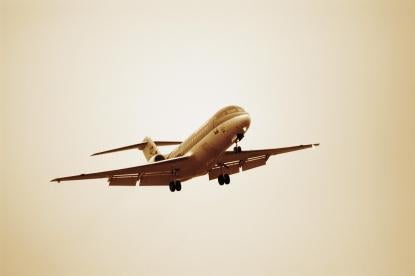New rules allow some aircraft-related items to fall into categories that may make them more attractive to foreign buyers.
On October 15, the Obama Administration reached an important milestone of the president’s Export Control Reform (ECR) Initiative, with the first set of revised export control lists and regulations taking effect. These changes significantly affect aircraft-related industries as they present an opportunity for manufacturers and exporters to reclassify certain items under a more flexible and beneficial regulatory system.
The New Rules
These new rules begin the process of fundamentally updating the United States’ export control regimes and include revisions to U.S. Munitions List (USML) Categories VIII (Aircraft) and XIX (Gas Turbine Engines). The revisions transition many less sensitive items from the U.S. Department of State’s International Traffic in Arms Regulations (ITAR) USML to the more flexible Department of Commerce’s Export Administration Regulations (EAR) Commerce Control List (CCL).
The new USML Category VIII controls are no longer broad and generic controls that capture everything. They are now detailed, enumerated lists that impose controls based on the sensitivity of an item. For example, the most sensitive items—such as bombers, fighters, unmanned aerial vehicles, and their key subsystems, parts, and components—remain on the USML, while less sensitive items—consisting of mostly parts and components, such as cockpit gauges, steel brake wear pads, and fuel filters—are now subject to the more flexible authorities of the EAR and will transition to the CCL.
The key to determining whether an item will transition from USML Category VIII to the CCL under Export Control Classification Number (ECCN) 9A610 or to EAR 99 will depend on the application of the new ITAR and EAR definitions of “specially designed.”
Definition of “Specially Designed”
The definition has a two-part approach. Part one “catches” things that are “specially designed,” and part two releases many types of items from the definition of “specially designed” so that they become not “specially designed.” Assuming an item is caught by part one, the exporter should focus on part two of the definition, i.e. the six separate “releases.”
Under part two, there are six possible ways an item can be released from being specially designed. For example, a part, component, accessory, attachment, or software is not considered to be specially designed if it is, regardless of form or fit, “a fastener (e.g., screws, bolts, nuts, nut plates, studs, inserts, clips, rivets, pins), washer, spacer, insulator, grommet, bushing, spring, wire, or solder.”
Also under part two, a part, component, accessory, attachment, or software is not deemed to be specially designed if it has the same function and performance capabilities and the same or equivalent form and fit as a commodity or software used in or with an item that (i) is or was in production (i.e., not in development) and (ii) is either not enumerated on the CCL or USML or is described in an ECCN controlled only for antiterrorism reasons.
Therefore, exporters and manufacturers should review the new definition of “specially designed” to ascertain if any items pending sale are released from the definition. If an item is released and is therefore not “specially designed,” then, for example, the item would not fall under ECCN 9A610.x and likely would fall under EAR 99. However, this would be inapplicable if, based on the item’s description, there is another CCL ECCN that would be more appropriate than EAR 99. If the item is “specially designed” under the new definition, then the item likely would fall under ECCN 9A610.x.
Implications
These changes will significantly affect exporters and manufacturers of aircraft-related items as these items may no longer fall under ITAR jurisdiction, making the products more attractive to foreign buyers. Exporters and manufacturers will no longer need a manufacturing license agreement document for foreign manufacture of CCL items. Additionally, because there is no concept of “defense service” under the EAR, providing services related to CCL products will not require any technical assistance agreement documents. EAR 99 items generally do not require a license to be exported or reexported to most destinations, and there is no annual registration fee paid to the Commerce Department, unlike under the ITAR. Furthermore, there is no “brokering” registration or licensing under the EAR.
In addition, many of the items moved to the CCL are now eligible for export without specific licenses under EAR license exceptions. One such EAR license exception is strategic trade authorization (STA), which is used when the item is intended for the ultimate end use by the governments of 36 U.S. allies and partners (although such exports carry with them additional compliance requirements). Failure to comply with STA requirements may result in an unlicensed export, opening up the exporter to significant penalties and fines.




 />i
/>i
